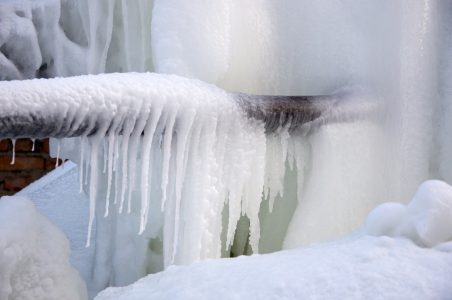Were you searching for related information concerning How to prepare your home plumbing for winter weather?

Cold weather can damage your pipes, specifically by freezing pipes. Below's how to stop it from happening and what to do if it does.
Intro
As temperatures decline, the danger of icy pipes rises, potentially bring about costly repair work and water damages. Comprehending exactly how to stop icy pipes is critical for property owners in chilly environments.
Avoidance Tips
Shielding prone pipelines
Cover pipelines in insulation sleeves or make use of warmth tape to protect them from freezing temperatures. Focus on pipelines in unheated or exterior areas of the home.
Home heating techniques
Keep interior rooms adequately warmed, especially areas with pipes. Open closet doors to allow cozy air to circulate around pipes under sinks.
How to determine frozen pipelines
Look for decreased water circulation from taps, unusual odors or noises from pipelines, and noticeable frost on subjected pipes.
Long-Term Solutions
Structural adjustments
Consider rerouting pipelines far from exterior wall surfaces or unheated locations. Include added insulation to attics, basements, and crawl spaces.
Upgrading insulation
Invest in premium insulation for pipes, attics, and wall surfaces. Proper insulation helps preserve consistent temperature levels and reduces the danger of frozen pipelines.
Securing Outdoor Plumbing
Yard tubes and exterior taps
Separate and drain garden hose pipes before winter. Mount frost-proof spigots or cover outdoor taps with insulated caps.
Understanding Icy Pipes
What triggers pipes to freeze?
Pipelines ice up when exposed to temperature levels listed below 32 ° F (0 ° C) for extended periods. As water inside the pipelines ices up, it increases, putting pressure on the pipe walls and potentially triggering them to break.
Dangers and damages
Icy pipelines can cause water supply disruptions, property damages, and pricey repairs. Ruptured pipelines can flood homes and create considerable architectural damages.
Indications of Frozen Pipeline
Identifying icy pipelines early can prevent them from bursting.
What to Do If Your Pipelines Freeze
Immediate activities to take
If you believe frozen pipes, maintain faucets open up to soothe pressure as the ice thaws. Utilize a hairdryer or towels soaked in hot water to thaw pipelines slowly.
Verdict
Avoiding icy pipes calls for proactive procedures and quick actions. By understanding the reasons, signs, and safety nets, homeowners can safeguard their pipes throughout winter.
5 Ways to Prevent Frozen Pipes
Drain Outdoor Faucets and Disconnect Hoses
First, close the shut-off valve that controls the flow of water in the pipe to your outdoor faucet. Then, head outside to disconnect and drain your hose and open the outdoor faucet to allow the water to completely drain out of the line. Turn off the faucet when done. Finally, head back to the shut-off valve and drain the remaining water inside the pipe into a bucket or container. Additionally, if you have a home irrigation system, you should consider hiring an expert to clear the system of water each year.
Insulate Pipes
One of the best and most cost-effective methods for preventing frozen water pipes is to wrap your pipes with insulation. This is especially important for areas in your home that aren’t exposed to heat, such as an attic. We suggest using foam sleeves, which can typically be found at your local hardware store.
Keep Heat Running at 65
Your pipes are located inside your walls, and the temperature there is much colder than the rest of the house. To prevent your pipes from freezing, The Insurance Information Institute suggests that you keep your home heated to at least 65 degrees, even when traveling. You may want to invest in smart devices that can keep an eye on the temperature in your home while you’re away.
Leave Water Dripping
Moving water — even a small trickle — can prevent ice from forming inside your pipes. When freezing temps are imminent, start a drip of water from all faucets that serve exposed pipes. Leaving a few faucets running will also help relieve pressure inside the pipes and help prevent a rupture if the water inside freezes.
Open Cupboard Doors
Warm your kitchen and bathroom pipes by opening cupboards and vanities. You should also leave your interior doors ajar to help warm air circulate evenly throughout your home.

We were guided to that report on How to prepare your home plumbing for winter weather from a friend on a different site. Enjoyed our blog posting? Please share it. Help others find it. Thank-you for going through it.
Click Here